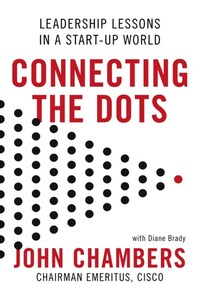Copyright
HarperCollinsPublishers 1 London Bridge Street London SE1 9GF
www.harpercollins.co.uk
First published in the US by Hachette Books 2018
This UK edition published by HarperCollinsPublishers 2018
FIRST EDITION
© John Chambers 2018
Cover layout design © HarperCollinsPublishers Ltd 2018
A catalogue record of this book is available from the British Library
John Chambers asserts the moral right to be identified as the author of this work
All rights reserved under International and Pan-American Copyright Conventions. By payment of the required fees, you have been granted the nonexclusive, non-transferable right to access and read the text of this e-book on screen. No part of this text may be reproduced, transmitted, downloaded, decompiled, reverse engineered, or stored in or introduced into any information storage retrieval system, in any form or by any means, whether electronic or mechanical, now known or hereinafter invented, without the express written permission of HarperCollins e-books.
Find out about HarperCollins and the environment at www.harpercollins.co.uk/green
Source ISBN: 9780008297039
Ebook Edition © October 2018 ISBN: 9780008297060 Version 2018-09-13
To my family:
For Jack and June Chambers, whose lessons shaped me For Elaine, whose love sustains me For John and Lindsay, who inspire me For Autumn and Jack, who fill me with joy
And for the people who’ve become family along the way,
from my daughter-in-law Ashley to the employees of Cisco and the startups in JC2. I’ve learned so much and love you all. —John
INTRODUCTION
I used to think the best time to have a book about yourself is after you’re dead. I don’t like to sing my own praises and I’m all too aware of my weaknesses. I also know that anything I have accomplished in my life, from overcoming dyslexia to building Cisco, has been because of the team of people around me. For 20 years, I had the incredible privilege to lead a company that connected people to the internet and changed the way we work, live, play, and learn. I view myself as a coach, as someone who builds great teams, and as an adviser. I love to teach. What changed my mind about writing a book wasn’t so much the lessons of the past as the opportunities of the future. We’re on the cusp of a revolution that will take the impact of the internet and not only multiply it but play out faster than any disruption we’ve ever seen. Within a decade, some 500 billion cars, fridges, phones, robots, and other devices will likely be communicating online. As an investor and adviser to startups worldwide, I’m incredibly excited by the potential for new technologies to foster longer lives, safer communities, and greater global prosperity, as well as to create hundreds of millions of new jobs. But I also now understand the fears because this disruption will be so brutal that 40-plus percent of businesses today won’t be here 10 years from now. We’re already seeing that impact start to play out in political movements, job losses, and broken business models. Meanwhile, the people at the forefront of this change often seem tone-deaf to the downside of this disruption and unaware of the risks that they face.
A good friend once told me that you can’t describe a company or a leader as “great” until they have gone through a near-death experience and come back. Steve Jobs did it with Apple, as did Jack Welch at GE. In 2000, Cisco was the most valuable company on the planet. We had grown 65 percent every year for a decade and I was treated as a Silicon Valley celebrity, complete with paparazzi following me home from restaurants and praise in the media as America’s “best boss” and “top CEO.” A year later, after the dot-com crash had wiped out a quarter of our customers and 80 percent of our stock price, my face was in the media for a much different reason. We survived that crisis and five other downturns that could have killed our business, as it did many of our competitors. We learned how to reinvent ourselves again and again.














